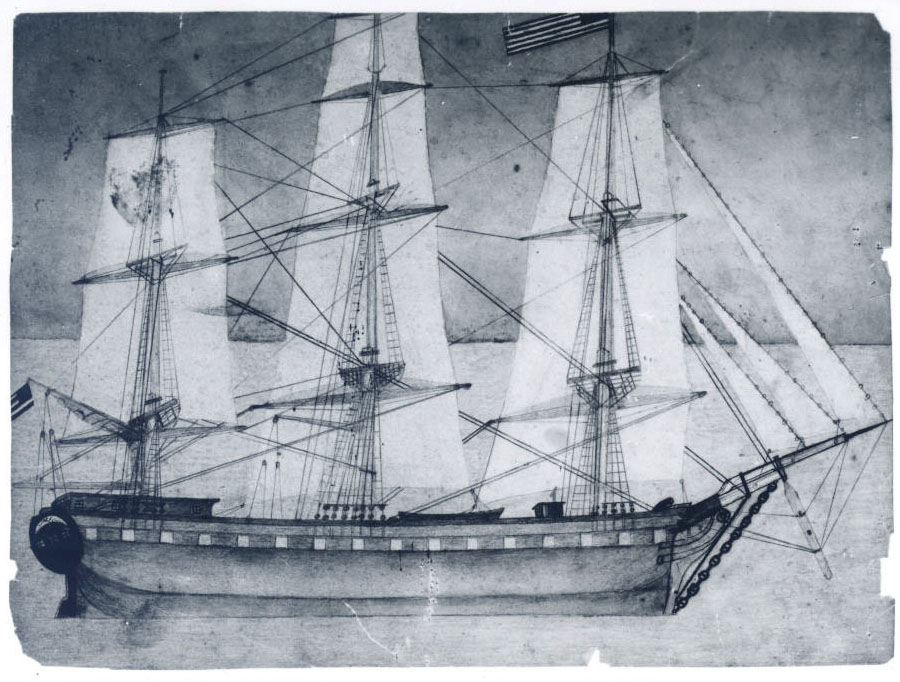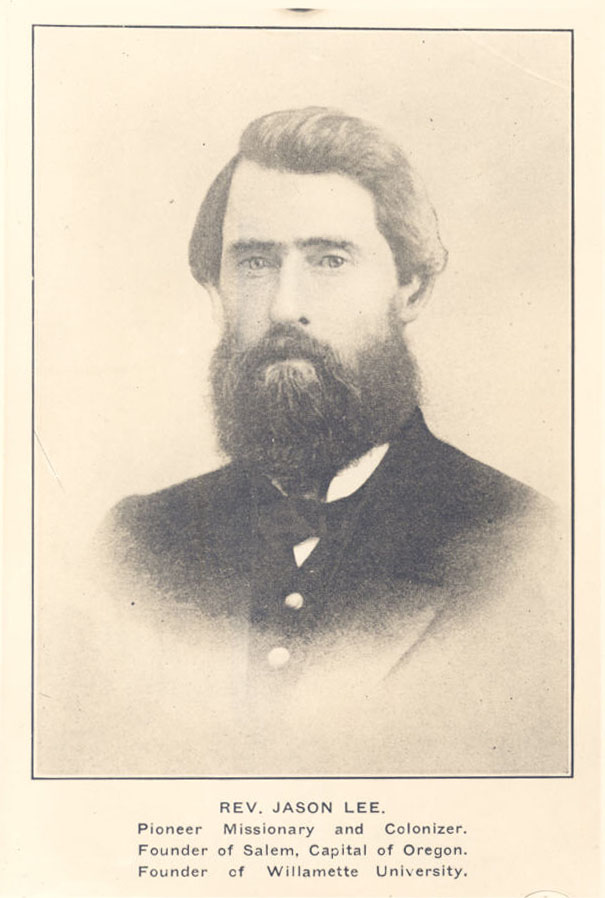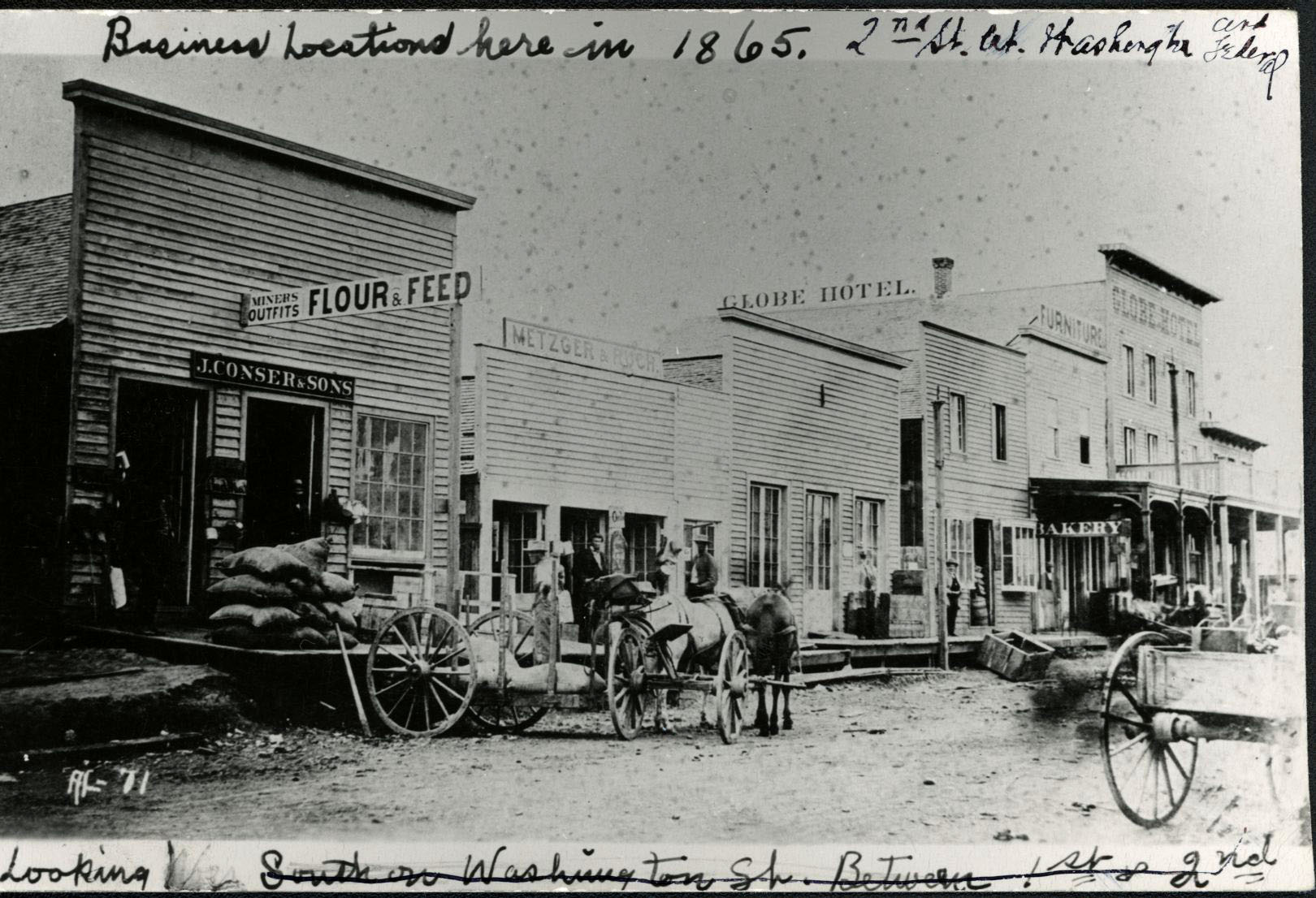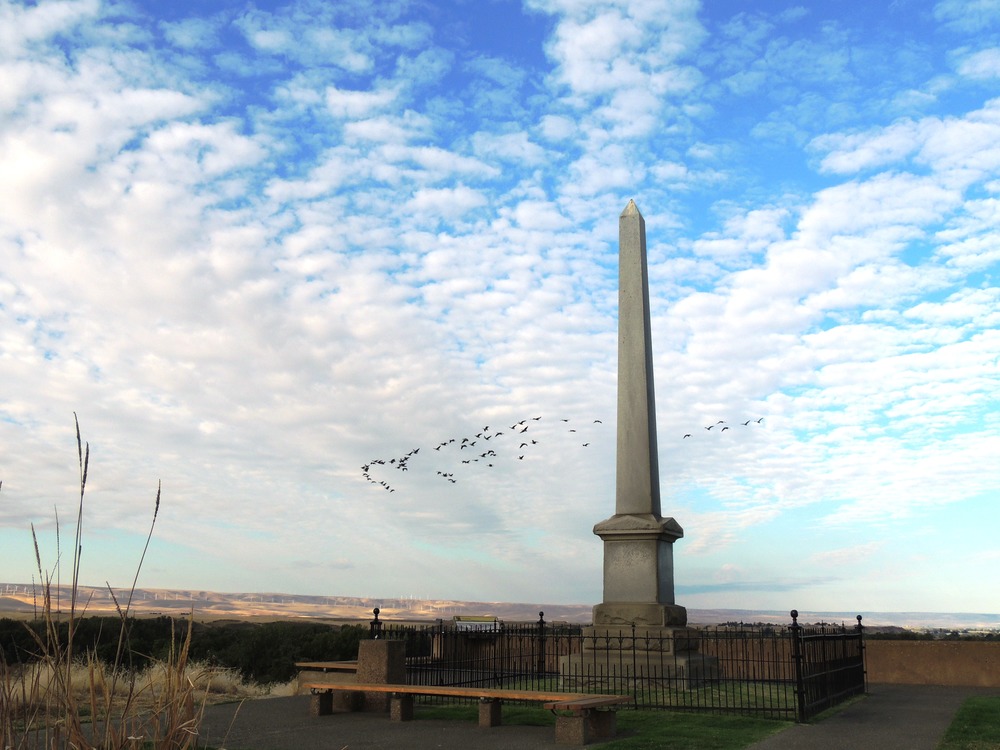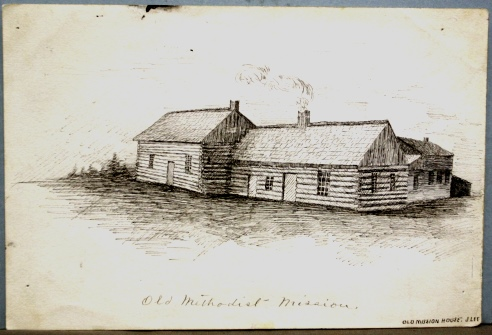Wascopam Mission, which operated at The Dalles from 1838 to 1847, was the most successful of the early Methodist missions to Oregon Indians, recording more converts to the church than the Willamette Mission, its better known equivalent near Salem. The mission was founded by Henry K.W. Perkins and Daniel Lee (nephew of Jason Lee) on March 21, 1838. The precise location of the mission is not known, but it was in the vicinity of the present-day Methodist Church and Pulpit Rock.
At its largest, the mission compound included a two-story residential mission house, a two-story chapel and school, a barn, and an Indian meetinghouse. Lee was present at Wascopam until August 1843, and Perkins until November 1844. In its later years, Wascopam was headed by Alvan Waller, with the assistance of Henry Brewer. Both Elvira Perkins and Laura Brewer were active in the mission.
Wascopam was the name of the people of the area. Wasq'ó ("cup") refers to "a cup-shaped rock near the village, into which a spring bubbled up," and -pam means "people of.” In later years, the name Wasco was extended to all Upper Chinook, or Kiksht, speakers in The Dalles area, most of whom were removed to the Warm Springs Reservation. Kiksht speakers on the north side of the Columbia River, who lived in the large village Nixluidix above Five Mile Rapids, were called Wishram; most of them were removed to the Yakama Reservation in Washington.
The Dalles was a multi-ethnic area, particularly during fishing seasons, when people came from the interior to fish or trade at the productive salmon fishery at The Dalles rapids. Most of these visitors spoke Sahaptin (predominant in the twentieth century on the Warm Springs, Yakama, and Umatilla Reservations). Perkins preached in Sahaptin, wrote a speller, and translated parts of the Bible into Sahaptin; and Lee attempted Kiksht and started a vocabulary. Perkins's Sahaptin manuscripts were lost, while Lee's partial Kiksht vocabulary survives. The Wascopam papers include important descriptions of Native culture, especially life cycle rites and spirit beliefs and ceremonies, but their greatest contribution is a complete coverage of the Great Revival of 1839-1840 among the Indians, a remarkable exercise in cultural interplay and blending performed in a religious context.
Stimulated by a visiting failed preacher, Benjamin Wright, Perkins experienced his own "day of salvation" on October 28, 1839. He began by going to people’s houses in Wascopam village. His first "convert" was the shaman Tumsowit, who began praying, consulting with Perkins, and spending time "alone among the rocks and hills." Spending time alone was a traditional Native way of gaining spiritual power, but the praying was Christian. After experiencing what Perkins described as "joy" at the end of a meeting, Tumsowit began to proselytize. Others followed his lead, including Yacooetar, a village chief and Tumsowit's housemate (and probable relative), and Tumeocool, an interpreter. The word spread among Tumsowit's extended family, including those in neighboring villages.
Lee, Wright, and Tumsowit traveled down the Gorge to villages at Claticut, Clemiaksuc, Nenootletete, Scaltape, and The Cascades. They held prayer meetings, where, according to Perkins, many "were born of the spirit." "Day and night,” he wrote, “the sound of prayer was heard…in the houses, the woods, the prairies." Reportedly, over 250 converts were counted. In December, traditionally the time for winter ceremonies and the highlight of the Upper Chinookan religious year, Perkins traveled "from village to village, preaching, catechizing, and taking the oversight of the classes as far as the Cascades."
On January 10, 1840, Perkins went upriver to Wishram. He later reported that after four days of preaching, with his congregation doubling daily, three hundred residents were in attendance. The missionaries then visited two interior Klikatat [var: Klickitat] villages. In April, they held a camp meeting at Kowelapse, downstream from The Dalles, which 1,000 to 1,200 people attended.
At Willamette Mission, most of the missionaries were incredulous that so many people had been "converted," and they were probably right. But at the least Perkins and Lee had introduced elements of Christianity to the local people. The revival of 1839-1840 had a major impact on the Native syncretistic religions that appeared on the mid Columbia in the mid 1800s—Smohalla's religion, the Feather religion, and ancestral Wáasat.
Wascopam Mission was sold to the Presbyterians in September 1847 and left in the care of Marcus Whitman's nephew, Perrin. Two months later, the Whitmans and others were killed at Waiilatpu Mission near Walla Walla.
Wascopam missionaries left a sizable documentary trail, including Perkins’s autobiography, his 1843-1844 daily journal, and Christian Advocate articles on the history of the Oregon Mission and the Great Revival. Lee contributed information on Wascopam in a book he wrote with Clatsop missionary Joseph Frost, Ten Years in Oregon (1844). Brewer kept a detailed journal in 1839-1840, and Elvira Perkins published Harp of the Willows (1858), a book of poetry with selections recalling the mission. Manuscript letters from most of the mission principals are concentrated in two collections—the Canse Collection at the Washington State Historical Society and the Archives of the Pacific Northwest Conference of the United Methodist Church at the University of Puget Sound.
-
![]()
Wascopam Mission, The Dalles, 1849.
Courtesy National Park Service
Related Entries
-
![Alvan Waller (1808-1872)]()
Alvan Waller (1808-1872)
In most histories of Oregon, Alvan Waller appears most prominently as t…
-
![Great Reinforcement (1840)]()
Great Reinforcement (1840)
One of the signal immigrations to Oregon came by sea in 1840, years bef…
-
![Jason Lee (1803-1845)]()
Jason Lee (1803-1845)
Few names in the history of early nineteenth-century Oregon are better …
-
![The Dalles]()
The Dalles
The Dalles is one of the oldest permanently occupied places in Oregon, …
-
![Whitman Murders]()
Whitman Murders
The 1847 murders of frontier missionaries Marcus and Narcissa Whitman n…
-
![Willamette Mission]()
Willamette Mission
Willamette Mission was the first noncommercial agricultural community e…
Related Historical Records
Map This on the Oregon History WayFinder
The Oregon History Wayfinder is an interactive map that identifies significant places, people, and events in Oregon history.
Further Reading
Boyd, Robert. People of The Dalles: the Indians of Wascopam Mission. Lincoln: University of Nebraska Press, 1996.
Brewer, Henry. The Journal of Henry Bridgman Brewer, September 3, 1839 to February 13, 1843, ed by Richard Seiber. Fairfield WA: Ye Galleon Press, 1986.
Brosnan, Cornelius. Jason Lee: prophet of the new Oregon. New York: Macmillan, 1932.
Hillgen, Marcella. "The Wascopam Mission." Oregon Historical Quarterly 39.3 (1938): 222-234.
Lee, Daniel and Joseph Frost. Ten Years in Oregon. New York: printed for the authors by J. Collard, 1844.
Perkins, Elvira. Harp of the Willows. Printed for the author by G.C. Rand & Avery, 1858.



